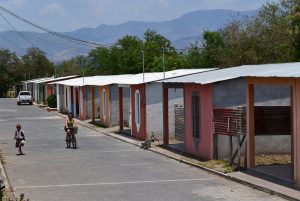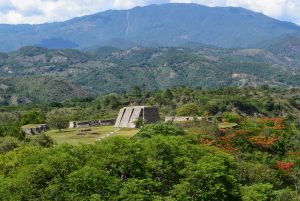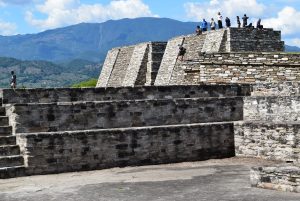
Guatemala neighborhoods new and old
I don’t know what it is about the journey that inspires me to write. Today we departed from Zacapa, an area we focused the last two days learning about housing development for communities in need of a dependable roof over their heads. The overall experience was different than I expected. I now feel concretely more aware of what it means to provide people sufficient shelter and tradeoffs likely to be encountered in the process.
 It was not easy to witness the barren streets of these planned ‘neighborhoods’ – but at least they have a house. I couldn’t help but think, however, the process to make a house into a home is completely different, and could be difficult. A ‘home’, I believe, is a contextual concept of ultimate comfort. To the sweet families residing in these neighborhoods, the oppressive heat and inadequate shade don’t appear to be issues. However, residents almost unanimously agree of the need for improved security.
It was not easy to witness the barren streets of these planned ‘neighborhoods’ – but at least they have a house. I couldn’t help but think, however, the process to make a house into a home is completely different, and could be difficult. A ‘home’, I believe, is a contextual concept of ultimate comfort. To the sweet families residing in these neighborhoods, the oppressive heat and inadequate shade don’t appear to be issues. However, residents almost unanimously agree of the need for improved security.
Moving on from these modern Guatemalan living conditions, today we are on the move to explore where the ancient Maya resided. We are off to Mixco Viejo. The journey to this Maya resting spot involved hours on the bus, a drive that became extended after getting lost. This event turned the drive from three to five hours. I was not disappointed by the miss-turn to be honest – it’s those random adventures down dirt paths that make me feel like I am truly in a place. The towns we past were small – making me think this life looks perfectly pleasant and pleasing. One element that constantly worries me is the quality of basic resources – like water. It’s wild to see what could be pristine perennial rivers to be trashed with plastics, pipe drainage and other pollutants.
 The people of these pueblos are what reinforce my passion for small communities and their livelihoods. As we make our way back to the road that will lead us on our path to the ruins, we pass people constantly. Their presence naturally welcomes and guides our journey down the winding roads passing up and down the hillsides of Guatemala. Many of them readily make eye contact and wave to us as we pass. Although our shared moments are momentary – they leave a lasting impression on my Guatemalan experience. The people here are beautiful – and I ponder the way Guatemalans developed into the diverse display of people we pass on this day.
The people of these pueblos are what reinforce my passion for small communities and their livelihoods. As we make our way back to the road that will lead us on our path to the ruins, we pass people constantly. Their presence naturally welcomes and guides our journey down the winding roads passing up and down the hillsides of Guatemala. Many of them readily make eye contact and wave to us as we pass. Although our shared moments are momentary – they leave a lasting impression on my Guatemalan experience. The people here are beautiful – and I ponder the way Guatemalans developed into the diverse display of people we pass on this day.
Eventually we arrive to the ruins – Mixco Viejo. At first, it appears melodramatic. The parking lot is small with no apparent ancient ceremonial and housing structures in sight. It’s fun to think that just yesterday we unloaded the bus into a neighborhood developed just 10 years ago – and now we unload the bus into a place that housed Maya beginning about 1,000 years ago. Walking through a narrow entrance, the ruins begin to unfold in front of us. The built environment strongly embodies the space. Members of our group pause in different spaces. I imagine this to be an uncontrollable response to the immenseness of the space and the history it represents.
 The ruins are back-dropped by several sweet settlements down below. I am in awe at the juxtaposition. The old with the new. And I wonder if there were similar problems in time we are ‘visiting’ here at Mixco Viejo. I think no. Each time period and place has its own challenges. However, it’s important to be aware of the problems and work together to find solutions. That is something I hope our and future generations gather momentum towards. Developing communities – no matter where they are at what structures they live in – that collaborate for their own and others happiness and sustainability.
The ruins are back-dropped by several sweet settlements down below. I am in awe at the juxtaposition. The old with the new. And I wonder if there were similar problems in time we are ‘visiting’ here at Mixco Viejo. I think no. Each time period and place has its own challenges. However, it’s important to be aware of the problems and work together to find solutions. That is something I hope our and future generations gather momentum towards. Developing communities – no matter where they are at what structures they live in – that collaborate for their own and others happiness and sustainability.

